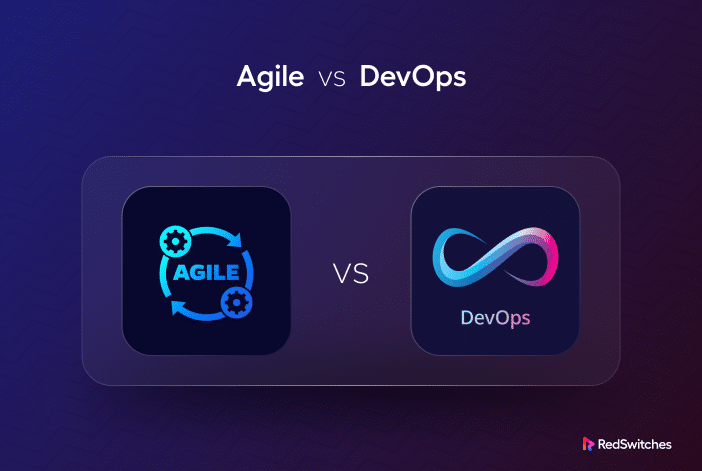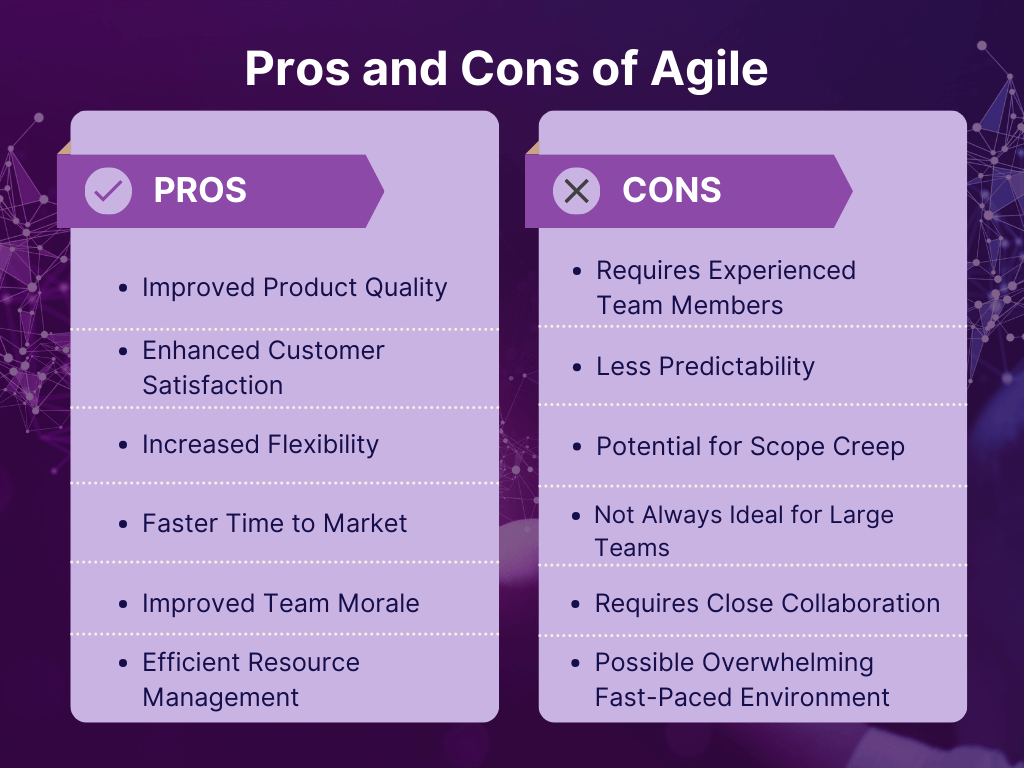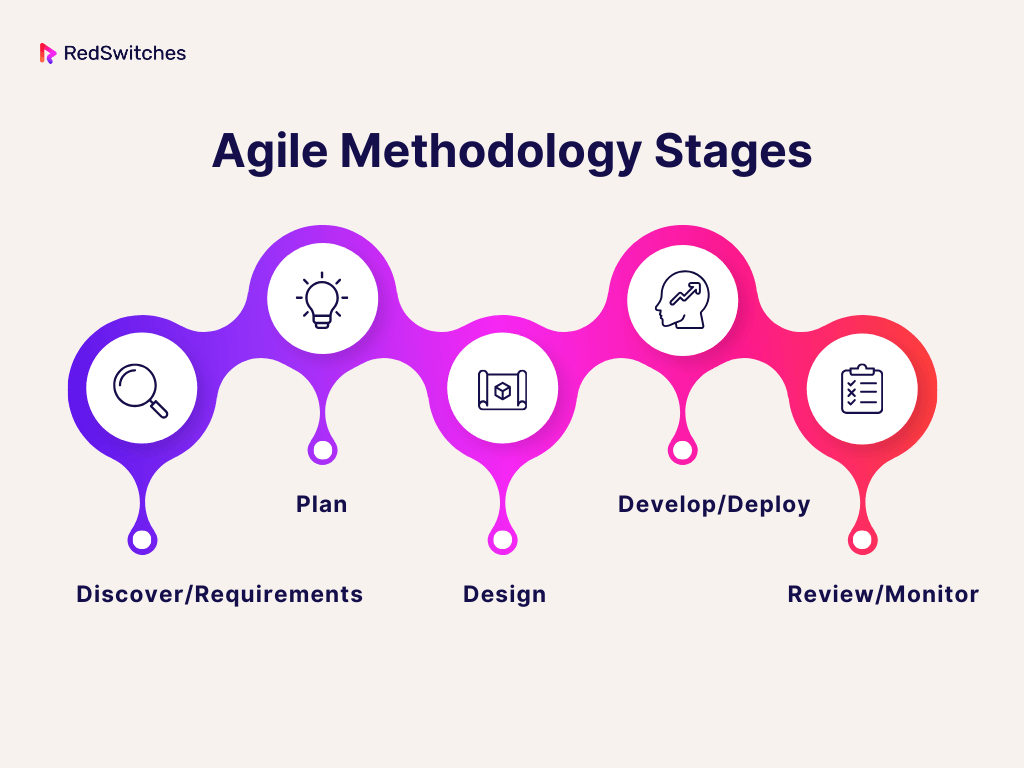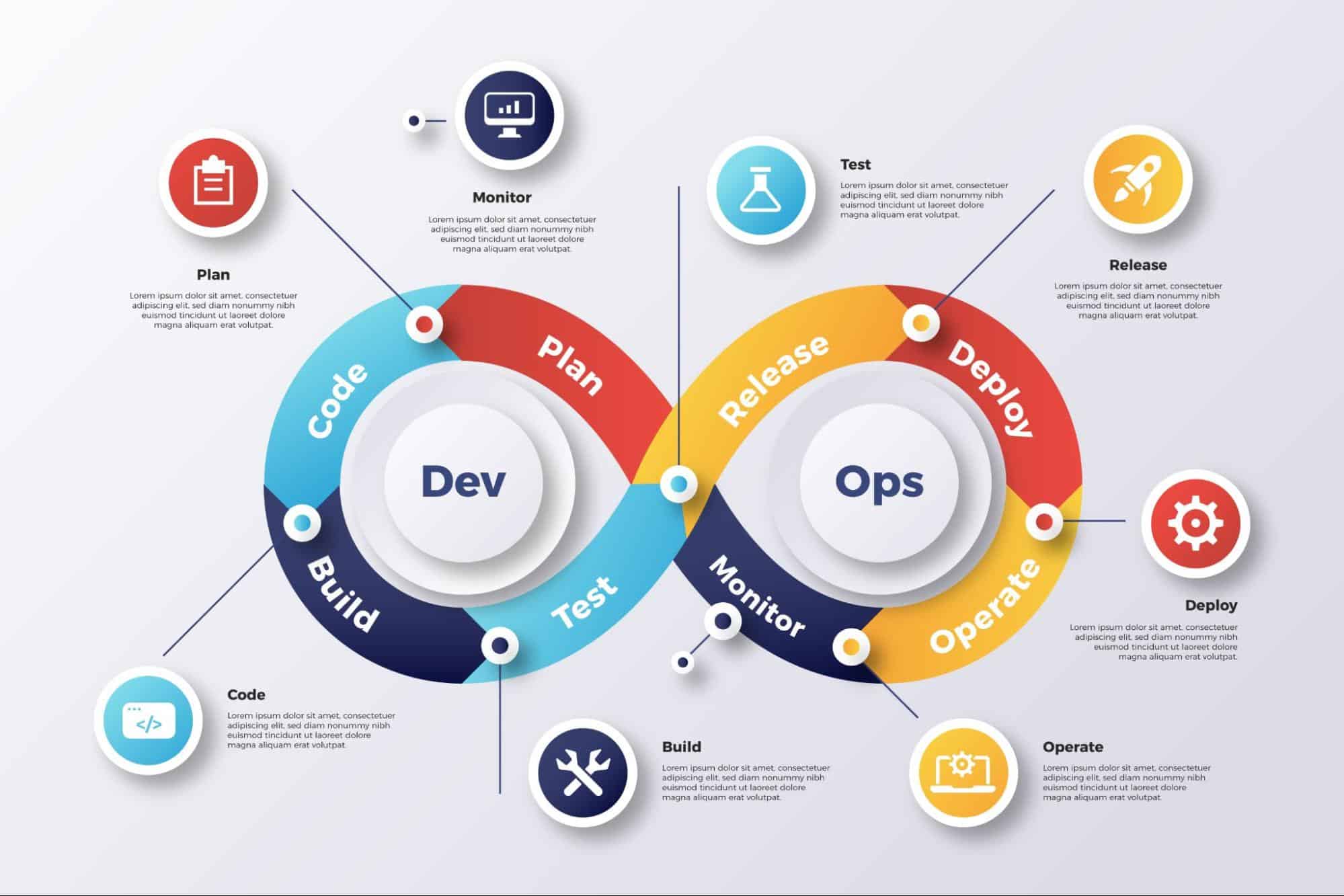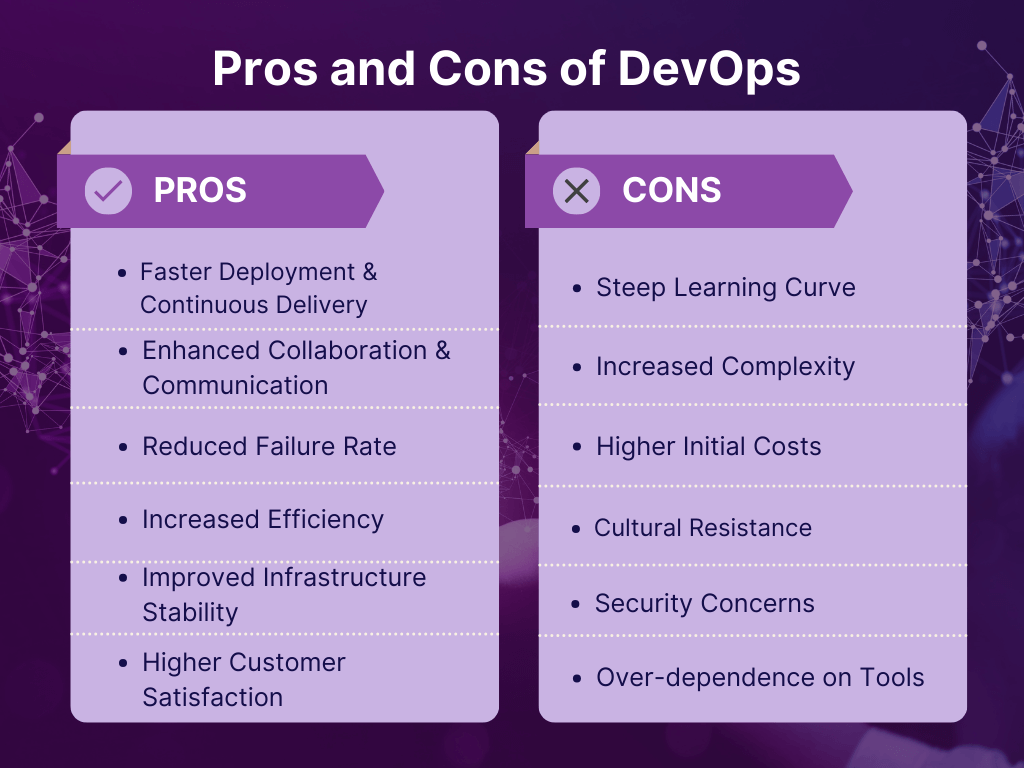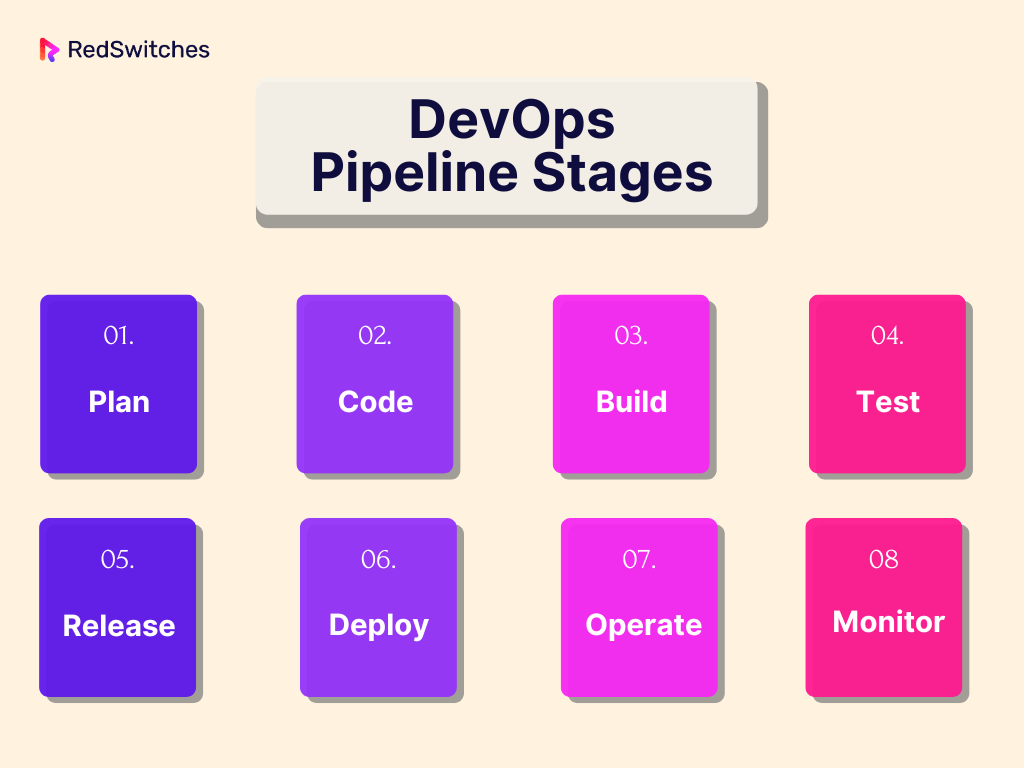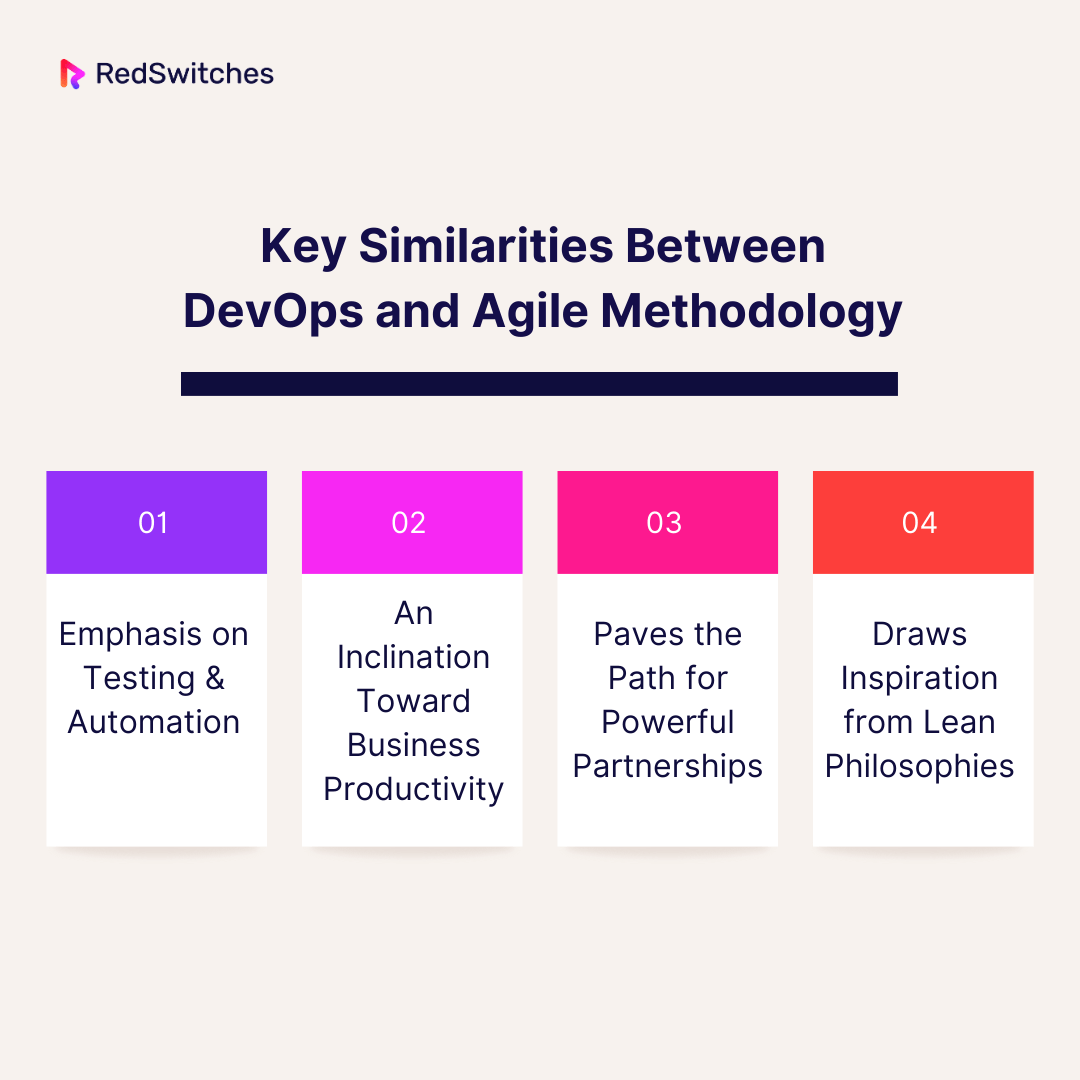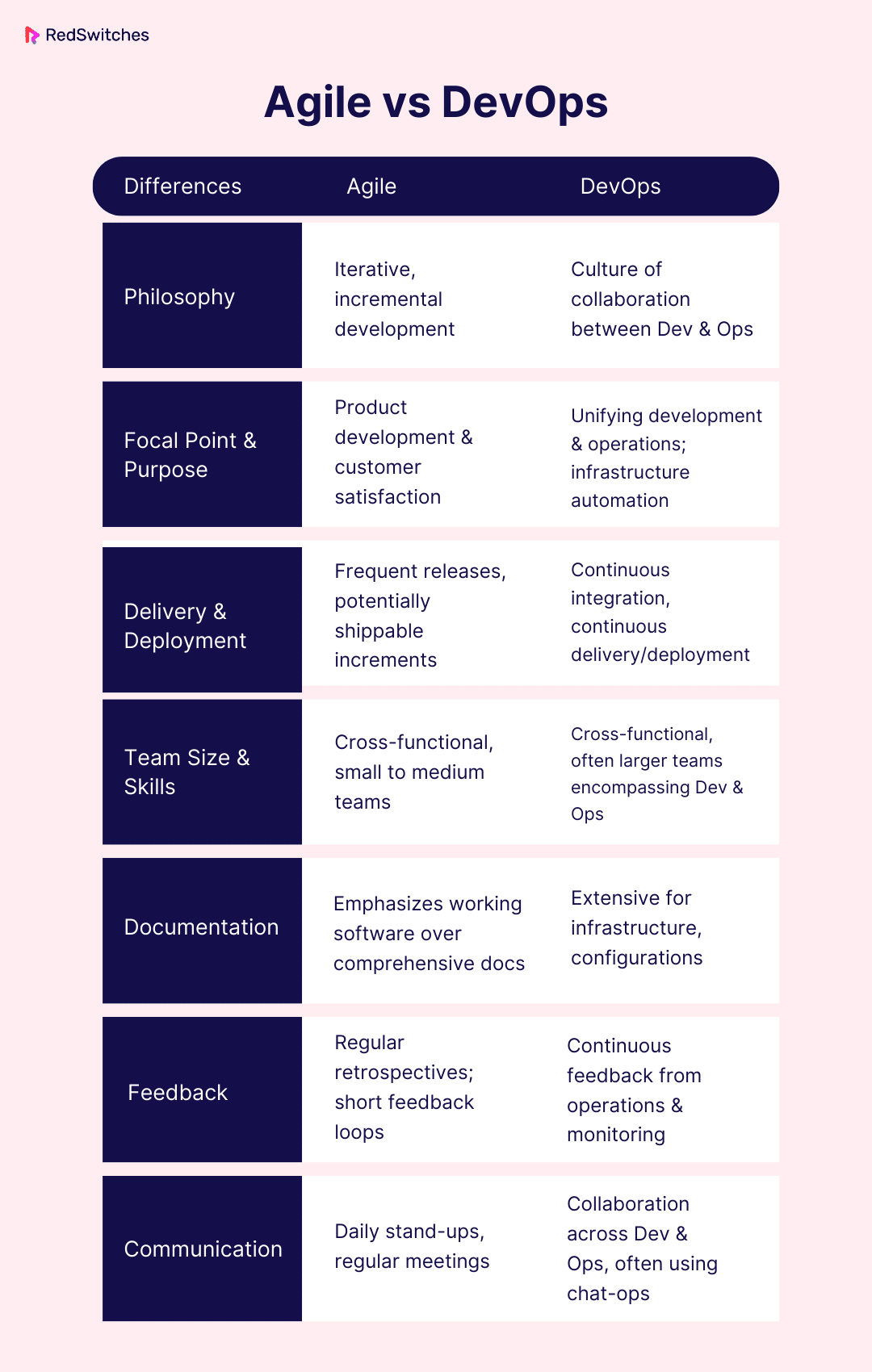As the tech world continues to flourish, the methods we use to manage software development and deployment play an integral role in determining the success of our projects. The debate between Agile vs DevOps extends beyond a mere clash of buzzwords. It’s about two unique methodologies that have transformed the IT industry.
In 2024, as businesses aim to accelerate and enhance delivery and greater efficiency, understanding the key differences between Agile vs DevOps has never been more critical. This blog explores the difference between DevOps and Agile methodology to help you decide which approach fits best with your organizational goals.
Table Of Contents
- What is Agile?
- Agile Methodology Stages
- What is DevOps?
- DevOps Pipeline Stages
- Key Similarities Between DevOps and Agile Methodology
- Key Differences Between DevOps and Agile
- Agile vs DevOps: Which to Choose?
- Conclusion
- FAQs
What is Agile?
Credits: Agile Alliance Website
Agile is a project management and product development approach that prioritizes flexibility and collaboration. Statistics highlighting the software developers who have used agile development methodology worldwide from 2015-2018 showed that in 2018, 91% of respondents stated their organization had used an agile development methodology, whereas 88% practiced continuous integration.
Agile involves reassessing and adjusting project scopes based on feedback and team collaboration. It emphasizes adaptability, iterative progress, and quickly delivering a minimum viable product.
The methodology advocates for collaborative decision-making between team members and stakeholders and promotes adaptive planning, evolutionary development, early delivery, and continuous improvement. Agile prioritizes delivering value to the customer faster and with fewer headaches.
Pros and Cons of Agile
Pros
- Improved Product Quality: Agile practices involve regular testing and feedback, ensuring consistently high product quality. They also help detect issues early and resolve them promptly.
- Enhanced Customer Satisfaction: Agile emphasizes regular customer interactions, ensuring that their needs and feedback shape the product. This close collaboration can result in a product that aligns closely with user expectations.
- Increased Flexibility: Agile allows for changes after the initial planning phase. This adaptability ensures the product remains relevant, even if requirements shift or evolve.
- Faster Time to Market: Agile projects often see a quicker release of minimum viable products, allowing for faster user feedback and potential revenue streams.
- Improved Team Morale: Agile promotes collaboration and values individual input, leading to empowered and motivated teams. A sense of ownership and shared purpose can boost productivity and morale.
- Efficient Resource Management: By focusing on high-value tasks first and continuously reprioritizing, Agile ensures that resources (such as time and funds) are used efficiently.
Cons
- Requires Experienced Team Members: Agile methodologies demand team members to be proactive and adaptive. This can be challenging for those accustomed to traditional models. Inexperienced teams might struggle without clear direction.
- Less Predictability: The flexible nature of Agile can make it harder to provide long-term forecasts. This unpredictability can be challenging for stakeholders wanting fixed costs or delivery dates.
- Potential for Scope Creep: Without clear boundaries, the flexibility in Agile can lead to expanding project scopes, potentially derailing timelines and budgets.
- Not Always Ideal for Large Teams: Agile often works best with smaller teams. Larger teams may face challenges in maintaining clear communication and consistent progress.
- Requires Close Collaboration: Agile requires regular communication and collaboration, which can be challenging if team members are remote or spread across different time zones.
- Possible Overwhelming Fast-Paced Environment: The iterative nature of Agile means regular deliverables and frequent changes. This fast-paced environment can overwhelm some team members, leading to potential burnout.
Agile Methodology Stages
Understanding the stages of Agile methodology when comparing Agile vs DevOps offers clarity on the unique characteristics, priorities, and workflows that distinguish Agile from DevOps. Below are the five Agile methodology stages:
Discover/Requirements
The journey begins with the discovery or requirements-gathering stage. Here, stakeholders and team members collaborate closely to identify and understand the project’s needs.
This is a crucial phase where clear, actionable user stories and features are defined. It’s not just about listing what the product should do but understanding the ‘why’ behind each requirement. In Agile, this stage is iterative, meaning as the project evolves, so too can the requirements, accommodating the ever-evolving needs of end-users.
Plan
Once the requirements are clear, it’s time to plan. This stage involves breaking down the user stories into actionable tasks and prioritizing them. Teams decide which features or tasks are most vital and allocate resources accordingly.
Sprint planning (a meeting in Agile in which a team defines upcoming sprint work) comes into play here. Tasks are assigned to specific sprints (usually 2-4 weeks long). This stage ensures a clear roadmap for the team to follow, but like everything in Agile, it’s flexible to changes.
Design
With a plan in hand, teams move to the design stage. This is where the visual and functional elements of the project come to life. Depending on the project, this could involve creating wireframes, mockups, or detailed designs. It’s not just about aesthetics; the design stage in Agile focuses on user experience, ensuring the final product is both functional and user-friendly.
Develop/Deploy
The rubber meets the road in this phase. Developers start coding, bringing the design to life. As features are developed, they are continuously integrated and tested, ensuring any bugs or issues are identified early. This stage epitomizes the iterative nature of Agile: develop, test, get feedback, refine, and repeat. Once the feature is ready and tested thoroughly, it’s deployed for end-users.
Review/Monitor
After deployment, the process doesn’t end. Agile teams continuously monitor the product’s performance, gather feedback, and make improvements. This stage is about understanding how real users interact with the product and making necessary refinements. Regular retrospective meetings are held to discuss what went well, what didn’t, and how the process can be improved for the next sprint or iteration.
What is DevOps?
Credits: FreePik
DevOps is a cultural and technical movement that emphasizes the collaboration between software developers (Dev) and IT operations (Ops) teams. It automates and streamlines the process of software delivery and infrastructure changes. In 2022, around 47% of respondents stated using the DevOps method for software development.
DevOps aims to shorten the system development life cycle while delivering software releases frequently in close alignment with business objectives. By fostering a culture of continuous integration and continuous delivery, DevOps aims to improve collaboration, reduce silos, and promote a shared responsibility for the quality and reliability of an application.
Pros and Cons of DevOps
Pros
- Faster Deployment & Continuous Delivery: DevOps practices lead to quicker software releases, enabling companies to improve product features and fix bugs faster. It ensures a constant flow of improvements to software driven by automated processes.
- Enhanced Collaboration & Communication: DevOps fosters a culture where developers and operations teams collaborate closely. This unified approach reduces silos, misunderstandings, and inefficiencies.
- Reduced Failure Rate: By adopting continuous integration and delivery, potential issues are identified and addressed promptly. This reduces the likelihood of significant errors or software breakdowns.
- Increased Efficiency: DevOps automation tools streamline processes, from code integration to testing and deployment. This leads to optimal resource utilization and reduced manual intervention.
- Improved Infrastructure Stability: With DevOps, there’s a consistent environment across stages, reducing inconsistencies and ensuring a more stable infrastructure. Infrastructure as Code (IaC) practices contribute to this stability.
- Higher Customer Satisfaction: Faster deployment and reduced errors mean products reach end-users quicker and with fewer issues. This results in increased customer satisfaction and brand loyalty.
Cons
- Steep Learning Curve: Transitioning to a DevOps model requires teams to learn new tools and methodologies, which can be challenging and time-consuming initially. Organizations may face resistance or reluctance from employees.
- Increased Complexity: DevOps practices, mainly when not implemented correctly, can introduce complexities. These complexities could arise from many tools, technologies, and processes.
- Higher Initial Costs: Investing in DevOps tools, training, and restructuring can be expensive upfront. Over time, increased efficiency might offset these costs, but the initial outlay is considerable.
- Cultural Resistance: Breaking down silos and merging two traditionally separate teams (development and operations) can lead to cultural challenges and resistance to change. Effective change management is crucial.
- Security Concerns: Continuous deployment and integration might sometimes overlook security checks. It’s essential to integrate security protocols into DevOps practices, but it’s a challenge many teams face.
- Over-dependence on Tools: While automation tools are pivotal for DevOps, an over-reliance on them can lead to neglecting manual checks and reviews, potentially overlooking critical issues or nuances.
Also Read: A Short Introduction to DevOps (and Why You Should Implement DevOps Best Practices ASAP!).
DevOps Pipeline Stages
Understanding the DevOps pipeline stages when comparing Agile vs DevOps provides clarity on the varying characteristics, priorities, and workflows that set DevOps apart from Agile. Below are the eight DevOps pipeline stages:
Plan
In the planning phase, the team defines the project’s scope, objectives, and potential roadblocks. This is where the requirements are collected, priorities are set, and the roadmap for the application or feature is developed. Collaboration between development, operations, and other departments is essential to ensure everyone is on the same page.
Code
The coding phase is where developers start writing the application or feature code. They utilize version control systems like Git to track changes and collaborate effectively. This phase transforms the requirements and objectives set in the planning stage into tangible software.
Build
After coding, the build stage is where the application’s source code is compiled into executable artifacts. Tools like Jenkins or Travis CI can automate this process, ensuring the code integrates well and is ready for testing.
Test
This is a critical stage in the DevOps pipeline. Automated tests are run to identify bugs, vulnerabilities, or any other issues in the code. Tools like Selenium or JUnit may be used to conduct various tests, ensuring that the software is reliable, secure, and meets the defined requirements.
Credits: FreePik
Release
Once testing is complete and the software is deemed ready, it moves to the release phase. This stage involves preparing the software for deployment in a production environment. The process often includes:
- Packaging the software.
- Setting up necessary configurations.
- Ensuring that rollback mechanisms are in place in case of failures.
Deploy
In the deployment phase, the software is rolled out to the production environment. This can be done manually or automatically. Automated deployment tools like Kubernetes or Docker can be used to ensure smooth and consistent deployments.
Operate
Once deployed, the software is in active use. The operations team ensures the application runs smoothly, addressing runtime issues, ensuring uptime, and ensuring that resources (like CPU, memory, and storage) are adequately managed.
Monitor
The monitoring phase is ongoing. Tools like Nagios or Prometheus monitor the application’s performance, resource usage, and potential errors. If any issues are detected, feedback loops are in place to inform the relevant teams, triggering either a new cycle of the pipeline or immediate hotfixes.
Do you want to learn about DevOps’ best practices? Read our informative piece, ‘DevOps Best Practices in 2023: 10 Best Practices Inside.’
Key Similarities Between DevOps and Agile Methodology
Below are a few similarities between DevOps and Agile methodology:
Emphasis on Testing & Automation
Both DevOps and Agile prioritize testing and automation, albeit from different perspectives. In Agile, Continuous Integration (CI) and Continuous Testing ensure the code remains deployable throughout its lifecycle.
Similarly, DevOps extends this by incorporating Continuous Deployment (CD) to automate the deployment pipeline, ensuring rapid delivery and consistent environments. The convergence of these principles promotes a culture where software can be reliably released at any time.
An Inclination Toward Business Productivity
DevOps and Agile are more than just software development approaches; they are business strategies. Both methodologies emphasize delivering maximum value to the customer.
While Agile focuses on iterative feedback and incremental value delivery through its sprints, DevOps underscores the end-to-end delivery pipeline, ensuring software moves smoothly from development to production, thereby adding value faster.
Paves the Path for Powerful Partnerships
Collaboration is at the heart of both Agile and DevOps. Agile promotes cross-functional teams where members from varying backgrounds and skills collaborate closely to ensure the product’s success.
DevOps bridges the traditional gap between development and operations, fostering a culture of shared responsibility for the product. This emphasis on collaboration leads to a more harmonized environment, ensuring better results.
Draws Inspiration from Lean Philosophies
Lean thinking, which originated from manufacturing, inspires DevOps and Agile. The core principle of eliminating waste, be it in the form of unnecessary processes, delays, or redundant tasks, is prevalent in both methodologies.
Agile, with its iterative approach, ensures that only the necessary features get developed, minimizing waste. DevOps focuses on streamlining the delivery pipeline, ensuring the software gets delivered to the users as efficiently as possible.
Now that we have discussed the definitions, pros and cons, and methodology stages of Agile vs DevOps, let’s explore the Agile and DevOps difference.
Also Read: What is PaaS in Cloud Computing?
Key Differences Between DevOps and Agile
Understanding the difference between Agile and DevOps can offer valuable insight into which methodology best fits your organization’s goals. Below are the seven key differences between Agile vs DevOps:
Philosophy
Below is a comparison of the difference between DevOps vs Agile in terms of philosophy:
DevOps
DevOps is a cultural and technical movement aimed at unifying software development (Dev) and software operations (Ops). This philosophy promotes a more collaborative environment where the two teams work smoothly together. The ultimate aim is to shorten the software development lifecycle, ensuring faster and more frequent releases with fewer errors.
Agile
Agile is a methodology that emphasizes iterative progress, flexibility, and collaboration. It centers around increments called ‘sprints’ typically lasting a few weeks. The philosophy encourages continuous feedback, adaptive planning, and rapid response to change, ensuring the product remains aligned with customer needs.
Focal Point & Purpose
Below is a comparison of the difference between DevOps vs Agile regarding focal point and purpose:
DevOps
DevOps focuses on the entire software delivery pipeline, ensuring both development and operations processes are streamlined. The purpose is to improve deployment frequency, achieve a lower failure rate for new releases, and maintain shorter lead times for fixes.
Agile
Agile emphasizes delivering small, functional pieces of software to the end-users as quickly as possible. The purpose is to enhance customer satisfaction by continuously delivering valuable software and allowing changes even later in development.
Delivery & Deployment
Below is a comparison of the difference between DevOps vs Agile in terms of delivery and deployment:
DevOps
DevOps aims for continuous delivery and deployment. Automated pipelines enable code to be tested and deployed to production automatically, ensuring that software is always in a releasable state.
Agile
Agile focuses on regular software deliveries through its iterative sprints. While continuous delivery can be an aspect of Agile, it’s unnecessary; the focus is on regular, scheduled releases.
Team Size & Skills
Below is a comparison of the difference between DevOps vs Agile regarding team size and skills:
DevOps
DevOps typically integrates professionals from development and operations into one unified team, often requiring broader skill sets across the software development and infrastructure spectrum. DevOps teams might gravitate towards having fewer members but with a wide range of skills. This structure ensures smooth CI/CD pipelines, infrastructure management, and rapid deployment.
Agile
Agile teams are usually cross-functional, composed of developers, testers, designers, and sometimes product owners. These teams tend to be smaller, adhering to the recommendation that they should be sized to be fed with two pizzas. The primary focus is on iterative development and delivering increments of shippable products.
Credits: Pexels
Documentation
Below is a comparison of the difference between DevOps vs Agile regarding documentation:
DevOps
In DevOps, documentation is often leaner and more streamlined. It focuses on technical details necessary for automation, integration, and deployment. Documentation is a guideline rather than a strict process, ensuring systems run efficiently and consistently.
Agile
Agile methodologies, especially Scrum, value working software over comprehensive documentation. Agile disregards documentation. Instead, it focuses on creating documentation that provides value to the user and development process, avoiding unnecessary bureaucratic hurdles.
Feedback
Below is a comparison of the difference between DevOps vs Agile in terms of feedback:
DevOps
DevOps emphasizes the importance of continuous feedback throughout the software lifecycle. Automated testing tools, monitoring, and logging systems provide instantaneous feedback, enabling immediate corrections. This continuous feedback loop ensures that issues are identified and resolved as soon as they arise.
Agile
Feedback in Agile methodologies is frequent but often revolves around sprint reviews or end-of-iteration demos. Here, stakeholders, product owners, and team members discuss the delivered features, ensuring they align with user needs and adjust the upcoming tasks based on the feedback received.
Communication
Below is a comparison of the difference between DevOps vs Agile regarding communication:
DevOps
Communication tends to be tool-centric in DevOps. It often involves using Chat-ops, which helps integrate chat platforms with development and operations tools, allowing teams to collaborate and automate tasks within their chat environment. It enables real-time communication, issue tracking, and streamlined workflows, enhancing the DevOps culture of continuous integration and delivery.
Agile
Agile methodologies place a high emphasis on face-to-face interactions and daily stand-up meetings. These regular, short meetings ensure everyone is aligned, blockers are addressed, and there’s a clear understanding of day-to-day tasks. Communication is transparent, direct, and immediate.
Read More: DevOps Roadmap 2023: A Guide to Becoming a DevOps Engineer.
Agile vs DevOps: Which to Choose?
Choosing between Agile vs DevOps largely depends on your organizational goals, the nature of your projects, and where you believe the most value can be added. It’s important to understand that Agile and DevOps aren’t mutually exclusive. Instead, they can complement each other. Below is a breakdown to help guide your decision:
Agile
- Focus: Agile focuses on iterative software development and delivery in small and frequent increments. The primary objective is to enhance software quality and responsiveness to changing customer requirements.
- Best for: Companies that wish to improve the speed and adaptability of their software development processes, especially when the requirements are not fixed or can evolve.
- Benefits: Enhanced collaboration, frequent releases, and adaptability to changing requirements.
- Considerations: Agile primarily revolves around development practices. It doesn’t inherently handle the operations side of the equation.
DevOps
- Focus: DevOps emphasizes the collaboration between development (Dev) and operations (Ops) teams. It bridges the gap between software development and its operation in a live environment.
- Best for: Organizations that want to boost collaboration between development and operations, aiming for rapid and reliable software releases.
- Benefits: Continuous integration and delivery (CI/CD), infrastructure as code, enhanced communication, and collaboration between traditionally siloed teams, leading to quicker failure recovery and reduced time between fixes.
- Considerations: DevOps demands a cultural shift, and tools that can automate deployment and monitoring processes.
Which to Choose?
- If your main challenge is the slow pace of software development and changing requirements, then starting with Agile practices might be beneficial. It emphasizes adaptability and iterative development, enabling teams to respond effectively to evolving project needs and deliver software more efficiently.
- Adopting DevOps principles could provide significant advantages if your deployment phase experiences bottlenecks or if there is a chasm between your development and operations teams.
- For many organizations, the best approach combines both. Agile can improve your software development process, and DevOps can ensure that software is deployed and operates reliably.
Credits: Pexels
Also Read: Google Cloud vs AWS vs Azure: The Ultimate Cloud Service Battle.
Conclusion
When comparing Agile vs DevOps methodologies, it is essential to consider their unique benefits, pros and cons, similarities, and differences to determine which is best tailored to your organizational needs and project scopes.
While Agile focuses on iterative development and continuous feedback, DevOps prioritizes smooth integration and quick deployment. Your choice should align with your team’s capabilities, project demands, and long-term vision.
As you contemplate the future of your IT endeavors, remember that the foundation is only as good as its support. With RedSwitches, you can ensure that your projects, regardless of your chosen methodology, are hosted on a robust, secure, and reliable platform. Our dedicated services will complement your Agile or DevOps strategies, leading to optimized results.
Contact us today for more information.
FAQs
Q. Is DevOps better than Agile?
Neither is ‘better’ in the Agile vs DevOps debate. Instead, they serve varying purposes. Agile focuses on software development processes, while DevOps prioritizes bridging development and operations for smooth and continuous integration and delivery.
Q. What is the main difference between Agile and DevOps?
The main difference between Agile vs DevOps is that while Agile centers on iterative software development and collaboration, DevOps is about streamlining the entire software delivery pipeline, encompassing development and operations.
Q. Can you do DevOps without Agile?
Yes, while the principles of Agile and DevOps often align, it’s possible to implement DevOps practices without strictly adhering to Agile methodologies in the Agile vs DevOps framework. The iterative nature of Agile can complement and boost the continuous delivery goals of DevOps.
Q. What is the difference between Agile and DevOps?
Agile and DevOps are two separate methodologies in the software development process. Agile focuses on iterative development and collaboration between cross-functional teams, while DevOps emphasizes the collaboration between development and IT operations.
Q. How do Agile and DevOps work together?
Agile and DevOps work together by aligning their respective principles and practices to achieve continuous delivery and fast feedback loops. They complement each other by integrating development, operations, and quality assurance processes.
Q. What are some key differences between Agile and DevOps methodologies?
One key difference is that Agile is primarily focused on the iterative development of software, while DevOps is centered around the collaboration and communication between development and operations teams to automate the software delivery process.
Q. What is the importance of DevOps culture in software development?
DevOps culture is essential in fostering a collaborative and communicative environment between development, operations, and quality assurance teams. It promotes shared responsibility, continuous improvement, and rapid delivery of high-quality software.
Q. How does Agile methodology differ from DevOps approach?
Agile methodology focuses on incremental and iterative development, emphasizing adaptive planning and evolutionary development. On the other hand, DevOps approach focuses on automating the software delivery pipeline and improving collaboration between development and operations.
Q. Can Agile and DevOps be used together in software development?
Yes, Agile and DevOps can be used together to enhance software development processes. Their combination enables organizations to achieve agility, continuous delivery, and efficient collaboration across development, operations, and quality assurance teams.
Q. How do Agile and DevOps methodologies support software development teams?
Agile and DevOps methodologies support software development teams by promoting iterative development, continuous integration, automated testing, and streamlined collaboration. They aim to improve the speed, quality, and efficiency of software delivery.
Q. What is the Agile Manifesto and how does it relate to DevOps?
The Agile Manifesto states values and principles for iterative and collaborative software development. DevOps shares the values of collaboration, automation, and continuous improvement with Agile, making them compatible approaches in modern software development.
Q. What is the missing piece of Agile that DevOps provides?
DevOps provides the missing piece of automated deployment, infrastructure management, and continuous delivery that complements the iterative and collaborative nature of Agile. It adds efficiency and reliability to the software development process.
Q. How does DevOps certification relate to Agile and software development methodologies?
DevOps certification equips professionals with the knowledge and skills to implement collaborative DevOps practices and tools. It complements Agile and other software development methodologies by enhancing the understanding and application of DevOps principles in the development process.
